
5 minute read
INTRODUCTION
Where wood acquires new life: at the Waldhaus in Sils Maria, famous writers have found inspiration for their work.

Advertisement
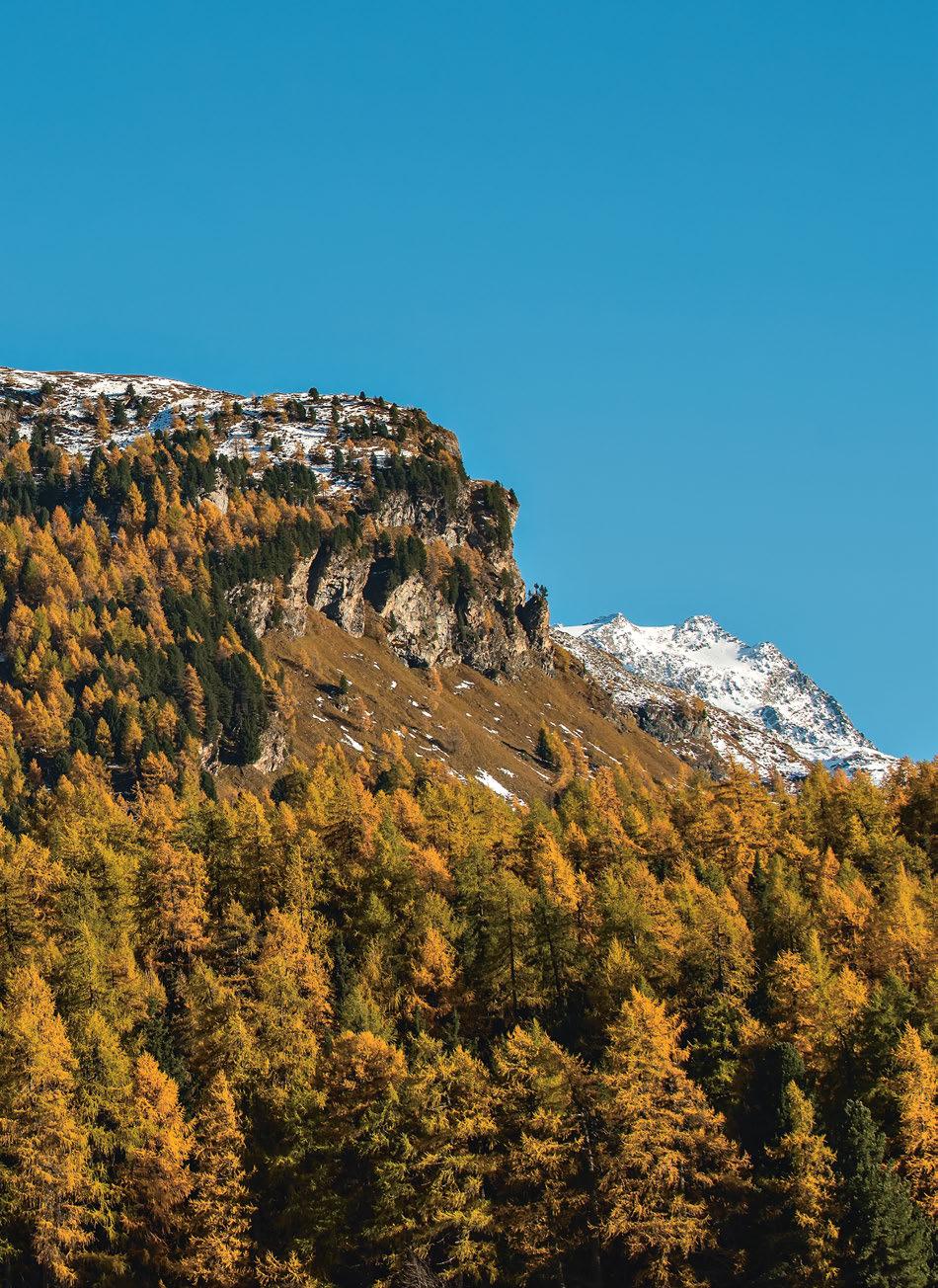
Morning awakening near St. Moritz: where the scent of pine needles and moss hangs in the air.
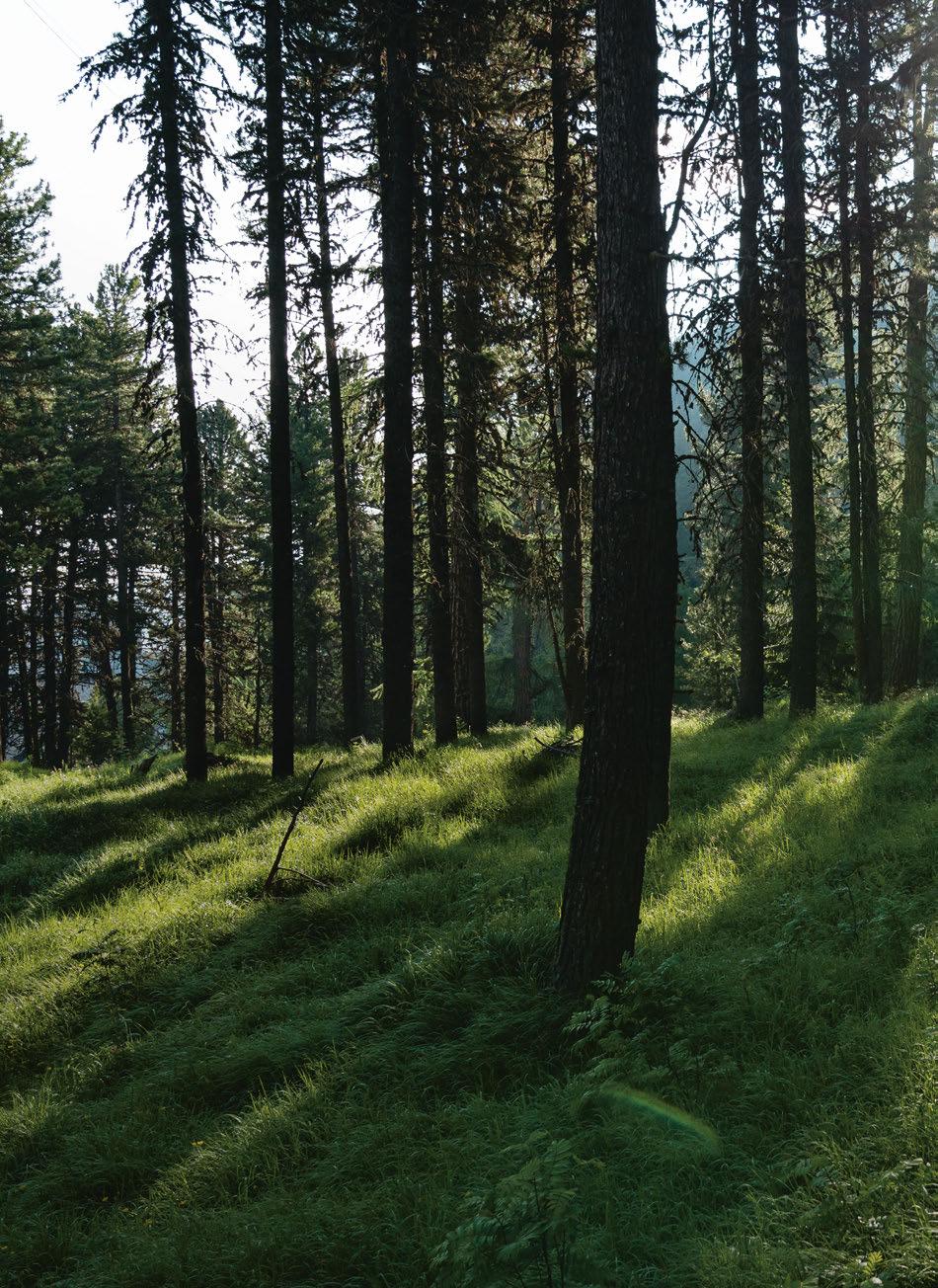



Il scuttinöz da god
Forest whispers
Swiss stone pine – Pinus cembra – il dschember Distribution: 47% Larch – Larix decidua – il larsch Distribution: 29.5 % Spruce – Picea abies – il pign Distribution: 19.9 %


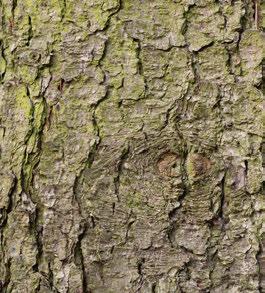
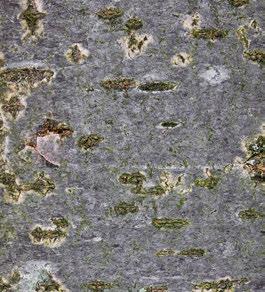

Scots pine – Pinus sylvestris – il tev Rowan – Sorbus aucuparia – Birch – Betula – il vduogn
Distribution: 1.8 % il culaischem Distribution: 0.6 % (together Distribution: 1.2 % with other deciduous trees) (together with the grey alder) Trees of the Engadin
On any stroll through the forests of the Engadin, walkers will encounter key residents including the Swiss stone pine and the larch, which turns to bewitching shades of gold in autumn. Nearly half the trees in the Engadin are Swiss stone pines; a third are larches. The trees’ bark is their protective skin, which changes over time, cracks, flakes off and bears scars. With careful observation, visitors can learn to identify trees just from their bark. Discover their secrets on your next hike!
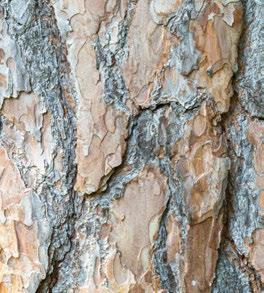
Plaun da Lej–Three wooden houses rock gently with the wavelets in the bay by Plaun da Lej on Lake Sils, awaiting visitors. Travellers who venture across the water are rewarded with a night to remember. Antonio Walther, who runs the Murtaröl restaurant and the Hotel Cristallina in Plaun da Lej, is also offering the three wooden houses in the middle of the lake as accommodation from the 2021 summer season. engadin.ch/pinewood
Other wooden holiday accommodation Rustic bungalow
The Gravatscha campsite in Samedan has small, modern wooden bungalows, each with sleeping area, bathroom and lounge. camping-gravatscha.ch
Sleep in a wine barrel Forest covering
About 10,610 hectares of the Upper Engadin are covered in forest – equivalent to roughly half a hectare per
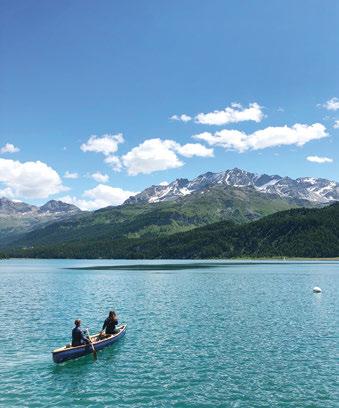
The house on the lake
inhabitant.
Forest residents
The Tais forest near Pontresina attracts countless birds, who will feed from visitors’ hands. Seed is available at the feeding stations.
Protection forest
About 40 per cent of Engadin woodland serves as protection forest against
avalanches and debris flow.
A night in a converted wine barrel at Madulain campsite is as atmospheric as a stay at a remote alpine hut. campingmadulain.ch
High forests
The tree line in the Engadin lies at 2,200 to 2,300 m. The sparse scattering of low trees is particularly beautiful at the “God Plazzers” forest below the Piz da Staz.
Swarms of gardeners
Forest ants are the industrious gardeners of the Engadin woodland. These tireless workers can carry up to 60 times their own body weight; as they transport seeds from trees and bushes considerable distances across the ground, they aid dispersion and so promote biodiversity. They are also the hidden rulers of the mountain forests: an ant colony can consume up to 100,000 insects in a single day. The Engadin is home to all six Swiss species of forest ant.
Spiky wonders
Sils Maria–When the larch trees drop their golden needles in autumn, the Maloja wind blows many of them on to Lake Sils. Here, they dance to the rhythm of the wind, from the shore out on to the water and back again – until eventually, shaped by the gentle waves, they form spiky balls of needles. Lucky walkers may spot one of these natural marvels along the shores of Lake Sils; if not, they can find the sweet variant of the “Sils ball”, made with chocolate, marzipan and meringue, at local patisseries.
Herbs and berries in the forest Secret treasures: top chef Fabrizio Zanetti sets great store by the berries and herbs of the local forests and meadows. He grew up in Graubünden, knows them well – and on guided walks, tells guests how to identify and use them. suvrettahouse.ch
Gateway to the Engadin
Maloja–The majestic Torre Belvedere stands at the top of the Maloja Pass like a lone sentinel guarding the entrance to the Engadin. Ancient mountain pines and gnarled
Five things that everyone should experience in the Engadin summer:
Gather a few Swiss stone pine shavings in a joiner’s workshop for your own pine pillow.
Leap into the cool waters of the Lej da Staz and then lie in the sun on the wooden jetty.
Hug a big tree high up at Muottas da Schlarigna. Swiss stone pines surround the historical tower as if defending it. Visitors who walk a few steps away from the structure find deep glacier mills close by, carved out of the rock by meltwater from glaciers. A marked trail leads to 11 of these marvels, partly via wooden gangways across the soft peat. The tower and surrounding forests belong to a nature reserve run by Pro Natura. Inside the tower, an exhibition explores the history
Top 5: Summer bucket list
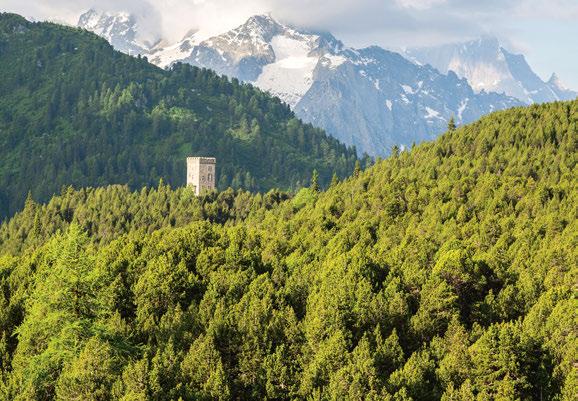
of the landscapes around Maloja. pronatura-gr.ch
Try the “Swiss stone pine menu” at the Restaurant Krone in La Punt.
Enjoy a trip on Lake Sils in the blue Engadin wooden canoe.
The best benches
1 A pilot’s perspective
Natural cockpit with Edelweiss bench, Furtschellas. joiners’ workshops in the Upper Engadin go
2
Double inspiration
Bench with book box at Plan Fedoz.
3
Breathtaking lake views
Tree-trunk sofa at 2,700 m, Piz da l’Ova Cotschna.
4 Break with ibex stories
Enjoy anecdotes from Pontresina rangers, Paradis Tour.
5 Panoramic siesta
Purtum benches with views over
20
the Zuoz region. through more than 5,000 cubic metres of wood a year: that’s two Olympic swimming pools full of wood.
To the oldest “Queen of the mountains” The trail from Pontresina up to Muottas da Schlarigna is quite steep, but rewards hikers with glorious views of the Engadin mountains and valleys. The descent towards Alp Staz and the Lej da Staz passes near the Upper Engadin’s oldest Swiss stone pine.







